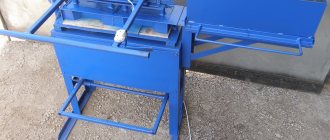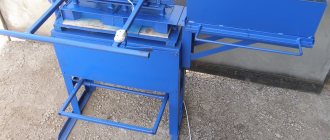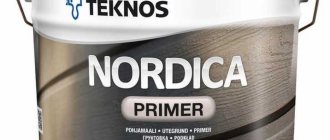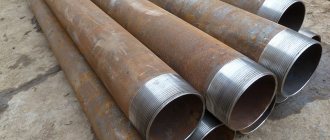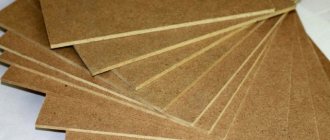Plastic containers are used as containers for many drinks. European countries have been processing such waste on an industrial scale for a long time, but in the Russian Federation this area is only just being developed. However, good plastic paving slabs can be made from waste. Moreover, the raw materials for such production are inexpensive and extremely accessible.
Advantages and disadvantages
The main advantage of paving stones made from plastic bottles is its affordable cost, due to low prices for raw materials for its production. The entire technology for manufacturing such products involves the use of additives, coloring pigments and plastic containers.
Advantages of polymer paving stones:
- does not become cracked when exposed to negative temperatures;
- polymer products are comparable in strength to concrete;
- It is easy to clear snow from plastic paths;
- frost does not form on the polymer coating;
- excellent adhesion to shoe soles, which minimizes the risk of injury due to a fall;
- the surface of the polymer tile is highly resistant to abrasion;
- plastic is characterized by a high level of moisture resistance;
- plastic is lightweight, so it is easy to install;
- the material is not afraid of exposure to chemicals;
- tiles made of polymers can withstand negative temperatures for a long time;
- PVC tiles can have different textures and colors.
This type of paving stone has only one drawback - when exposed to high temperatures, its dimensions increase. To prevent damage to the material under the influence of ultraviolet radiation, during the installation process it is necessary to maintain a 3-5 mm interval between the tiles.
Recommendations
The production of tiles from plastic bottles cannot be done without molds for pouring the molten mass. The material from which the molds must be made is plastic, fiberglass or rubber.
Rubber molds are not widely used because they are relatively expensive, heavy and quickly become unusable. Fiberglass is well suited for the production of large-sized products.
The peculiarities of this material are such that a special lubricant must be applied to the mold each time it is used. The most common are plastic molds made of heat-resistant material.
Sometimes layer-by-layer technologies are used to save dye. Then a colored layer is formed first, then a layer without dye, and then a colored layer on top again. The thickness of one layer is 2 cm.
In the process of manufacturing a material, there are always defects and various trimmings. They should be re-crushed in the machine and used as raw material for new products. But when making paving slabs from plastic bottles, the environment does not suffer much trouble.
The production of modern and beautiful tiles from plastic bottles will serve the purpose of environmental safety. After all, difficult to decompose garbage is being removed. Possessing high performance characteristics, this product will always find its consumer. Modern production of paving slabs from plastic bottles will soon replace its concrete counterpart.
Components of the material
For the production of PVC paving stones, not only plastic bottles, but also other polymers can be used. In addition, you will need dye and sand. Ordinary containers are suitable as raw materials, which do not even need to be cleaned of food residues and stickers. Excess components burn themselves during processing. In this case, the raw materials do not need to be sorted.
Plastic tile makers can also use parts from plastic canisters, boxes, film and bags. Moreover, it is recommended to use polyethylene parts in order to add shine to the finished product.
Soft types of polymers can increase the plasticity of finished tile products. If they are not added during production, the product becomes more fragile. Manufacturers adhere to the following proportions:
- solid polymer compounds - 60%;
- soft plastic - 40%.
Taking these proportions into account allows you to achieve the optimal degree of rigidity of the paving stones. Using this technology makes it possible to fully utilize plastic waste. It is prohibited to add rubber, fluoroplastic and polycarbonate to the tile composition, because these components disrupt the homogeneity of the material.
The sand that is used to make polymer paving stones is thoroughly cleaned of excess inclusions. In this case, the manufacturing time of the product depends on the dryness of the sand component. The quality of the product depends on the uniform mixing of plastic and sand. The ingredients are taken in the following proportions:
- coloring matter - 1%;
- polymer elements - 9%;
- sand - at least 90%.
High-quality polymer paving stones are produced with the addition of inorganic dyes.
general information
If you are planning to open a mini plant for the production of paving slabs as a business, you should understand that this is a seasonal job, unlike the production of nails. Therefore, the enterprise will operate only a few months a year.
To create a small plant, you will need significant start-up capital. It will cost you almost the same amount as buying a ready-made business. On the one hand, you can get rid of unnecessary hassle in one fell swoop and purchase an existing enterprise. But on the other hand, if you organize it yourself, you will be able to control the process of assembling the production line, as well as choose high-quality equipment and methods for producing paving slabs.
Try to diversify your product range as much as possible. This will allow you to attract a huge number of clients to it in a short time. Thanks to this, the income of the enterprise will significantly increase.
Scope of application
This material is very popular both among construction companies and private homeowners.
On the site near the house, using these paving stones, you can create paths that lead to the garden or home. You can use this coating to create an area for children to play or relax near the pool.
Plastic tile products can often be seen at car washes, gas stations, car parks, and service stations.
Polymer tiles can be used in the design of front gardens and flower beds. Municipal institutions often use this material in the construction of public gardens, parks and playgrounds.
Do-it-yourself paving slabs from plastic bottles - Metalist's Guide
Environmentalists estimate that a third of all garbage on earth is made up of plastic bottles. Today they sell juices, mineral water, beer and other liquid products. Plastic bottles are rarely used a second time.
These are disposable containers, which is why tons of this useless material accumulate in waste storage facilities.
However, in recent decades, the processing of plastic bottles into so-called flex has become widespread.
- Flex production technology
- How much money do you need to start a plastic recycling business?
- Paving slab manufacturing technology
This material is a white chip of plastic, which can be used to make products that are no less useful in everyday life and industrial activities. A thin fiber is “pulled” from the flex, which can be used as bristles for brushes.
These can be not only household products, but also cleaning machines for professionals. In the West, they even learned to make paving slabs from this material. In our country, such technologies are still a novelty. There is practically no competition in the market.
For a businessman who decides to start his own business processing recyclable materials, it will be easy to organize the acceptance of PET bottles and the sale of finished products.
Pallet production
Machine for tiles with plastic bottle caps
The channel “Hobbies, Hobbies, Homemade Products” showed an interesting homemade machine for making paving slabs.
The technology is simple, the master made it from chipboard, the edges for the tiles are from waste from plastic windows, or just wooden ones.
The main thing is that there is a small corner of 2-3 degrees so that the tile can be easily reached. Caps from plastic bottles were also used.
What is special about this machine?
Springs from the valve heads are used. The upper part, where the tiles are, can be easily removed, there are 4 springs. The upper part is below, I made such a gadget - it’s from a vibration belt for weight loss. Vibration still does not benefit the human body, so I disassembled this belt, took out a vibrator and attached it here.
The control panel, we'll show you how it works. The upper part is easily removed and held in place by such parts, you just screw it on with self-tapping screws, they are inserted into the spring, they are also easy to install.
And it works under remote control.
You can install an electric motor and put some kind of eccentric on the shaft so that there is vibration.
Powered by a computer power supply. Just in case, useful information, if you want to connect something from the power supply to the computer, disassemble it and connect the green wire to the black one, then the power supply will work and output 12 volts. 12 volts are yellow and black wires, red and black are 5 volts.
I used cling film on the structure, lined everything with cling film, it sticks well. After production, you see, no moisture gets in, everything is clean. And I decided to experiment.
I watched a lot of videos on how paths are made using the lids of one and a half racks, it turns out beautifully, I decided to make such tiles.
I covered it with cling film, put the lids upside down, laid out the ornament, made sure to put a mesh for the fittings and poured it - it turned out to be a beautiful tile.
The proportions of the solution, as the author answered the question: 1 part cement, 1 part sand, 0.5 parts fine crushed stone (screenings). Instead of screening, you can use sand. Next, watch from 4 minutes on the video channel
Paths made from plastic bottles - a budget option for arranging a summer house
To improve the garden area, a lot of financial, time and labor costs will be required. But skillful owners figured out how to turn unnecessary things into functional products.
Installation of plastic tiles
The process of laying plastic paving stones is simple, so you can do it yourself. For this you need the following materials and devices:
- cement mixture (PTs400);
- coarse sand;
- crushed stone;
- plastic tiles;
- border elements.
Installation of polymer products is carried out according to the following scheme:
- marking;
- extraction of 25-30 cm of the top soil layer;
- installation of border elements;
- installation of geotextiles at the bottom of a dug trench;
- crushed stone drainage device;
- laying geotextile fabric on drainage;
- powdering and compaction of the sand layer;
- Polymer paving stones are laid on the sand.
To lay thin polymer tiles in sand, you need to add cement.
At the final stage, the seams must be filled with clean and dry sand.
Production of coating from waste tires
New sidewalk made from old tires
Producing the material and laying it with your own hands involves the following:
- It will be necessary to separate the tread, which will later serve as a treadmill. For these purposes, we use a sharp, sharpened knife, a small amount of soap solution or oil, as well as any object such as a wedging device. Using a knife, the sides are cut in a circle. In order for the knife to cut as well as possible, it is necessary to lubricate it with oil or solution.
The first step is to trim the court from the tire - A corresponding wedge is installed behind the knife, which can be used as an adjustable wrench, an ordinary wooden block, or a pry bar. After the processing procedure is completed, the result is a central part and sides that are unsuitable for subsequent installation.
- After the required number of samples have been created, production is curtailed, after which you can begin installing the structure yourself.
You can level the rubber by nailing it to the beams - Installation involves the use of a certain number of strips, depending on how wide the garden path is planned to be created later. For example, if the path is wide, you can use four or more strips of rubber as laying material. If you need to start laying a large area, a significantly larger amount of material is selected.
- It is important to take into account that the distance between the individual stripes is about 1, maximum 2 centimeters. In the space formed between the individual strips, grass begins to sprout; it is necessary, as it allows you to hold the structure without displacement.
- Special attention should be paid to the treatment of the place for installing wooden parts of the structure, for which some recess will need to be dug. This will somewhat prevent subsequent lifting of the edges of the rubber coating.
Lids are also used
A more interesting version of a country path if you use bottle caps.
Call the children to create such a path. Making mosaics will lift their spirits. But first you need to prepare your workplace.
Lay out the future path. If desired, install formwork and thoroughly compact the soil in the selected area, first placing construction waste there.
We lay out all the plugs.
Place the boards on top and compact them so that the lids are on the same level.
For a pleasant look, you can also fill the gaps with sand and walk again with a board, then with a brush to remove unnecessary soil on the finished country path.
A path made of traffic jams will look more elegant if you lay it out like a mosaic, in the form of a beautiful pattern.
A path of inverted lids will be a pleasant foot massage.
The principle of creating a path is similar, only at the end of the work there is no need to fill it with construction mixture.
This path is not intended for constant walking, only for medicinal and decorative purposes.
Vertical method of making a border
When looking at a photograph of a flower bed made of bottles made using the vertical method, everyone mistakenly believes that it is complex, but it is not.
The vertical method is simpler than the horizontal one. You will need plastic bottles of absolutely any capacity.
c11edd7d4ec829a6cff194cca84e509e.jpe
6037b377d72f49c72964a7ebb1d030ce.jpe d4ab21d19073106d529ca85316adb6f0.jpe
It is preferable not to take bottles with soft plastic, but to opt for hard plastic. When filled, bottles made of hard plastic will hold their shape more steadily.
You need to bury it in a pre-dug trench of shallow depth. You will get a good, rather high fence. The only drawback is the weak stability of this design.



